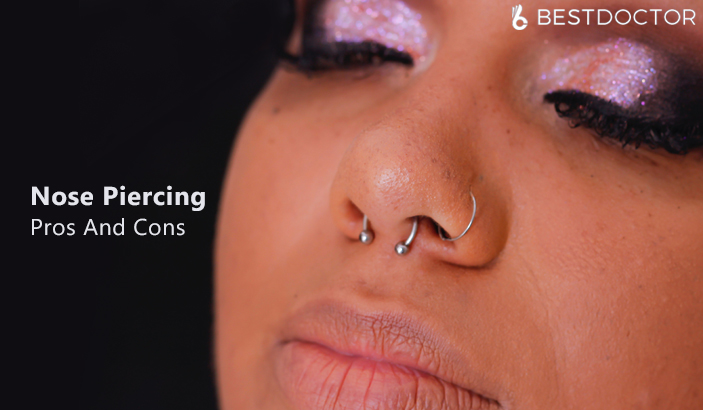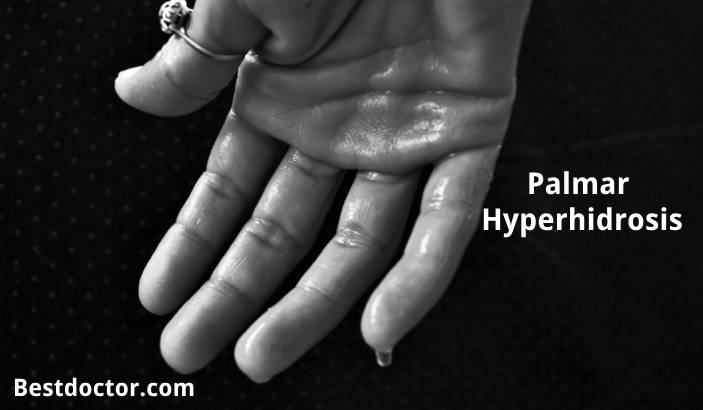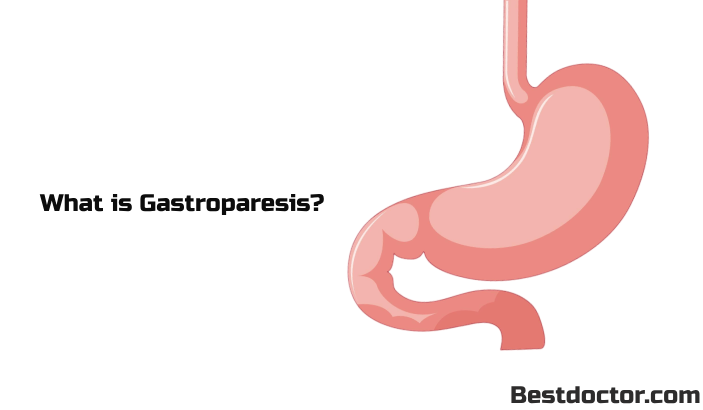Body piercing has been a fairly common practice in several communities worldwide. There are a lot of health benefits as well as some religious and superstitious beliefs linked to body piercing especially the nose and ear piercings.
Historians and archeologists have also confirmed that the practice of body piercing dates back to 5000 years and has been noted in most parts of the world.
The popularity of body piercing has steadily increased among the younger population, also making it one of the most sorted after the fashion trend. In India however, body piercing especially ear and nose piercing is performed as a ritual in even children as young as 2-6 months of age.
This article will help you understand the pros and cons of nose piercing, nose piercing care, nose piercing health benefits along with side effects of nose piercing.
[Also Read: When To Go To Doctor For Ear Piercing Infection]
Pros Of Nose Piercing
The most common site for nasal piercing among Indian women is the left nostril. Nose piercing is a form of acupuncture, which means that it has several benefits.
The following are some of the benefits of nose piercing;
- It is a belief that the left nostril is associated with the female reproductive organs. Therefore, piercing the left nostril helps to reduce period pain in women; however, research papers supporting this theory are scarce.
- Piercing the left nostril is also linked to easier childbirth and lesser complications during delivery of the baby.
- Some religious beliefs also suggest that women get their nose pierced before their wedding to impress Goddess Parvati (the goddess known as the ideal wife for her devotion towards her husband Lord Shiva).
- Ayurvedic texts also claim that piercing the left nostril improves general health and maintains overall vitality.
- Apart from these scientific reasons, nose piercing or any kind of body piercing for the matter helps in creating an identity. In the medical field, piercings are noted as identification points for people.
Cons Of Nose Piercing
There are no specific disadvantages of nose piercing. The ones mentioned below can be called as potential side effects of nose piercing done under unhygienic conditions or due to improper care after piercing.
1. Allergies
Some people may be allergic to the metal inserted for piercing or to the latex gloves used by the person who is piercing the nose.
2. Rejection Of Ornament
This also is a form of allergy towards the metal used and may compel the removal of the pierced ornament. Rejection of the ornament is more of a side effect rather than a disadvantage of nose piercing.
3. Infection
Since the bacteria Staphylococcus aureus colonizes maximally in the nose, nasal piercings have a high chance of getting infected with eventual pus formation.
4. Bleeding
Mild bleeding may be present occasionally. However, severe bleeding must be reported to the doctor immediately as it may occur usually due to rupture of a blood vessel.
5. Scar Formation
Keloid or scar formation is the commonest complication or a disadvantage of getting the nose pierced. Getting rid of a keloid may prove to be tedious. It can be prevented by proper care after piercing.
6. Blood Donation
The American Red Cross doesn’t lay any guidelines for blood donation after body piercing. Other humanitarian agencies, however, ask people to observe a period of at least 6-12 months after anybody piercing for blood donation.
7. Granulomatous Inflammation
This is a painful and the most dreaded condition after nose piercing. In this condition, the nose stud or nose pin gets embedded into the nasal mucosa. This can cause the destruction of the nasal cartilage. This may also obstruct breathing and in such case, the nose studs need to be removed surgically.
[Also Read: What Is Nose Piercing Bump]
How To Take Care Of Nose Piercing?
After having the nose pierced, it is very important to take good care and maintain hygiene at the pierced site. A freshly pierced nose generally requires about 3-6 months to heal completely, which means you need to take care of the piercing for about 6 months from the date of the piercing.
A nose piercing is nothing but a wound which ideally requires at least 7 days for recovery. The following tips will help you understand how to prevent side effects of nose piercing and how you can speed up the process of healing with minimal or no complications whatsoever.
- Clean the pierced nostril using a mild soap and water only to avoid the build-up of dead cells. Staphylococcus aureus is the commonest bacteria infecting the skin.
- Coconut oil can be used locally after cleaning to keep the piercing moisturized.
- Avoid touching the pierced nostril with unclean hands as it helps to prevent bacterial contamination of the piercing.
- Avoid using harsh products over the pierced site such as harsh soaps, scrubs, or cosmetics. The contents of these products may turn out to be irritants for a fresh nose piercing which may eventually interfere with the natural healing process and may even slow it down.
- Strictly avoid swimming. The water may be home to several types of microorganisms such as harmful bacteria which can contaminate the piercing and cause infection and pus formation.
- As healing progresses, small crusts may form around the pierced metal. Use clean cotton to remove these crusts and not hands. Also, do not forcibly remove the crusts as they may bleed.
- Avoid changing the nose stud or nose ring until the piercing has healed completely.
- Avoid contact sports. Any trauma to the nasal piercing can cause unbearable pain and bleeding.
- You also take non-steroidal anti-inflammatory drugs (NSAIDs) available over the counter after a fresh piercing for about 3-5 days or by prescription from a doctor to prevent any kind of inflammation.
- A homeopathic medicine Calendula, specifically used after injuries and to speed up wound healing can be taken for about 7 days after the fresh piercing. It also helps to prevent infection, pus formation, and bleeding.
Although nose piercing enhances the aesthetic appeal, it is equally important to consider the pros and cons of nose piercing. It is also essential to understand that the process of its healing may differ from person to person based on each individual’s immunity and body’s response to the piercing or the metal used for piercing.
Dr. Himanshi is a Homoeopathic consultant and currently working as a lecturer in Post-graduate faculty of Homeopathy, Parul University, Vadodara. Completed BHMS and MD in Homeopathy in January 2018 and also has a clinical experience of about 6 years. Personal interests include reading, spending time with family and traveling.








Enhancing Your Career Opportunities with Improved Vision from LASIK Surgery in Manhattan
What Does Cloudy Urine Mean in Females and Males?
Palmar Hyperhidrosis: Understanding Causes, Symptoms, and Treatment
16 Warning Signs You Need to Go See Your Doctor As Early As Possible